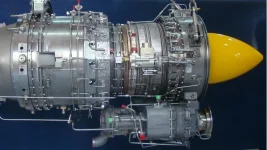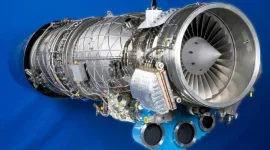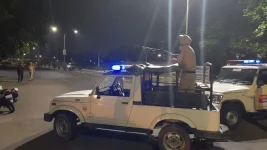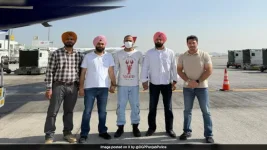- Views: 3K
- Replies: 23
The Hindustan Turbo Fan Engine (HTFE-25), an ambitious project by Hindustan Aeronautics Limited (HAL), represents a significant step in India's journey towards self-sufficiency in aircraft engine technology.
This 25 kilonewton (kN) thrust turbofan engine is being developed to power various aircraft, including trainer jets, unmanned aerial vehicles (UAVs), and potentially light combat or regional aircraft.
While the project has achieved considerable technical progress since its inception, ongoing delays raise concerns about its projected timelines and global competitiveness as of early 2025.
Initiated in 2013 by HAL's Aero Engine Research & Development Centre (AERDC) in Bengaluru, the HTFE-25 is designed as a twin-spool engine with features like a three-stage low-pressure compressor and a five-stage high-pressure compressor.
Its 25 kN thrust (around 5,620 pounds) makes it suitable for single-engine aircraft up to 5 tonnes or twin-engine aircraft up to 9 tonnes. Potential applications identified by HAL include trainer aircraft like the HJT-36 Sitara and advanced unmanned systems such as the Combat Air Teaming System (CATS) Warrior drone and High-Altitude Long Endurance (HALE) platforms.
Notably, HAL has funded the HTFE-25 project entirely from its own resources. This internal funding approach has allowed the company to focus on building long-term indigenous capabilities without direct pressure from the Indian Air Force (IAF) or the Ministry of Defence (MoD). However, this independence may also contribute to the project not adhering strictly to initial timelines.
Since the project began, the HTFE-25 has passed several important milestones. The engine's core component had its first successful test run back in December 2015. By 2019, two core engines had been built and subjected to extensive testing, accumulating 339 runs, including successful cold-start trials and tests at high altitudes in Leh. That same year, HAL explored a basic afterburner version, indicating potential for a more powerful variant reaching up to 40 kN thrust.
Development received a boost with the opening of a modern design and test facility at AERDC in December 2023, featuring advanced tools and dedicated test beds. By mid-2024, critical acceleration tests had reached 55% of the engine's target speed, and the full engine demonstrator completed its first run.
As of April 2025, development continues actively with two core engines undergoing testing. However, HAL's original goal of completing validation by 2025 appears unlikely. Current estimates suggest a delay of 2-3 years, pushing this phase to 2027-2028.
Experts anticipate that the transition from a tested technology demonstrator to a fully certified, flight-ready engine could take another five years or more, possibly placing final certification around 2029-2030.
This extended schedule highlights the inherent complexities of aero-engine development, possibly amplified by the internal funding model which lacks the external deadlines often imposed by defence procurement programs.
The specific aircraft platforms that will ultimately use the HTFE-25 also remain uncertain. Initial thoughts linking it to the HJT-36 trainer or even upgrading the Jaguar fleet seem to have shifted. HAL now appears focused on UAVs, particularly those within the CATS program. However, these applications still require formal adoption by the IAF, leaving the engine without a confirmed lead project to drive its final stages.
Investment in infrastructure, like the AERDC facility inaugurated in 2023 by Defence Secretary Giridhar Aramane, has significantly aided the engine's refinement. Furthermore, the development of an afterburner variant holds promise for expanding the engine's use to light combat aircraft or drones, provided the core engine achieves certification first.
Despite progress, significant challenges remain. A critical hurdle is the lack of a dedicated flying testbed aircraft (like a modified large transport plane) needed for comprehensive high-altitude testing under realistic flight conditions. Critics point out that the pace of development, often a concern with HAL projects, risks India falling behind as global competitors push towards next-generation engine technologies. The absence of a firm IAF requirement for the engine also complicates long-term planning and resource commitment.
Looking forward, HAL intends for the HTFE-25 to be a foundational technology for future, more advanced engine programs. With an estimated potential market of 200-250 engines for military trainers, UAVs, and possibly small civilian jets, success would bolster India's position in the global aero-engine market and reduce reliance on imported engines. The afterburner version, if successfully developed and certified, could meet future IAF needs for powered platforms in light combat roles.
To realise this potential and overcome the current delays, HAL may need to accelerate progress, possibly through enhanced collaboration with private industry and academic institutions, and secure a definitive commitment from an end-user like the IAF. Integrating the HTFE-25 into a confirmed program, such as the CATS ecosystem or a future trainer aircraft, could provide the necessary momentum for its final development and certification phases.





